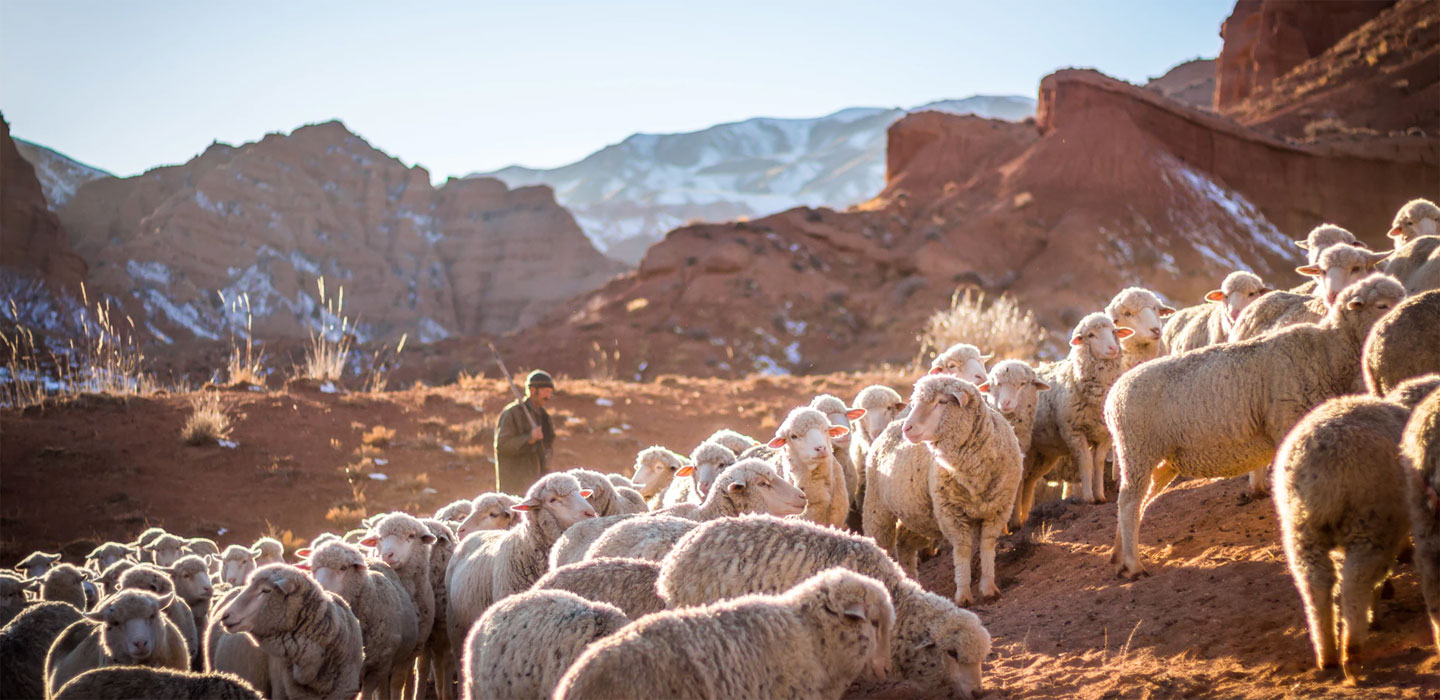EAT-Lancet Commission Brief for Farmers
IFAD Asset Request Portlet
ناشر الأصول
EAT-Lancet Commission Brief for Farmers
The EAT-Lancet Commission presents a global planetary health diet that is healthy for both people and planet. Discover the report’s key takeaways and the specific actions that farmers can take to contribute to the Great Food Transformation.
المقدر للقراءة دقيقة 6
What should you know?
- The food we eat, the ways we produce it, and the amounts wasted or lost have major impacts on human health and environmental sustainability. Getting it right with food will be an important way for countries to achieve the targets of the UN Sustainable Development Goals and the Paris Agreement on climate change.
- Farmers as producers are important stewards of human and planetary health through food production. By addressing crop choice and modes of production, agriculture can become the primary driver of both good dietary health and environmental conservation.
- Today, agriculture occupies nearly 40% of global land, making agroecosystems the largest terrestrial ecosystems on the planet. Food production is responsible for up to 30% of global greenhouse gas emissions and 70% of freshwater use. Land conversion for food production is the single most important driver of biodiversity loss.
- Foods sourced from animals, especially red meat, have relatively high environmental footprints per serving compared to other food groups. This has an impact on greenhouse gas emissions, land use and biodiversity loss. This is particularly the case for animal source foods from grain fed livestock.
- While global food production has successfully kept pace with population growth in sheer volume, what is or is not consumed are both major drivers of malnutrition in various forms. Globally, over 820 million people continue to go hungry every day, 150 million children suffer from long-term hunger that impairs their growth and development, and 50 million children are acutely hungry due to insufficient access to food.
- In parallel, the world is also experiencing a rise in overweight and obesity. Today, over 2 billion adults are overweight and obese, and diet-related noncommunicable diseases including diabetes, cancer and heart diseases are among the leading causes of global deaths.
- Food can be a powerful driver of change: A sustainable global food system by 2050 means sufficiently healthy food for all with no additional land use conversion for food, protection of biodiversity, reduced water use, decreased nitrogen and phosphorus loss to waterways, net zero carbon dioxide emissions, and significantly lower levels of methane and nitrous oxide emissions. While farmers work locally, their collective impact can shift the whole balance of food production practices and the wider global food system.
- Farmers are central to driving actions to ensure sufficient, healthy and sustainably produced food for all. This will require a reorientation of agricultural priorities; moving from an emphasis on producing high yields to meet calorific requirements toward producing a diversity of healthy foods in sufficient quantities and of acceptable quality without any further expansions into intact natural ecosystems. This implies increasing the production of fruits, vegetables, legumes and nuts by 9% annually and 50–150% by 2050.
What can you do?
- Adapt broad key principles. There is no silver bullet to environmental sustainability, but certain key principles are integral to defining the final outcome. Mix and match crops, techniques, practices and technologies to produce more on less land, limit nutrient loss to water, store carbon in the soil, and provide room for biodiversity to flourish.
- Focus on applying specific practices. Focus on practices that improve soil carbon concentration, reduce nutrient leakage from the fields, and enhance the efficiency of crop water use. These efforts will support farms in shifting away from being sources of environmental degradation.
- Decrease greenhouse gas emissions. Carbon sequestration in agricultural soils and above ground must increase significantly and practices such as conservation tillage or riparian buffers can support efforts to limit greenhouse gas emissions. Moreover, feed additives and feed reformulation also show promise in contributing toward reducing emissions.
- Spare half of the Earth from agriculture. Clearing natural lands for food production has enormous impacts on climate and the biodiversity of ecosystems. Halt agricultural expansion by prioritizing maximizing food production on existing productive lands and by focusing on closing yield gaps.
- Share the other half with nature. Conserve 10 hectares for every 100 hectares of cultivated land by applying conservation practices strategically, for example in order to protect waters or to support beneficial organisms such as pollinators in accessing fields.
- Plant healthy and sustainable crops. Ensuring that the diets of 10 billion people are both healthy and sustainable will require an increase of the production of fruits, vegetables, legumes and nuts by 9% annually and 50–150% by 2050.
- Pick the right crop for the right spot. In coming decades, the probability risk of hot and dry years will double globally and even triple among certain countries such as India and China. By picking the right crop for the right spot, farmers can select varieties better adapted to changing climates and produce a greater diversity of foods.
- Reduce and reuse the nutrients. Adopt precision farming techniques that allow for more accurate timing in the application of nutrients and avoid excess application to the soil. Alongside this, take steps to recycle nutrients from cropping systems via cover cropping or conservation tillage and by integrating livestock on the farm where possible.
- Waste not, want not. Nearly 30% of all food is lost or wasted and up to 50% of fruit and vegetables, with the latter having a particularly important role for human health. Reduce food loss on the farm by practicing good pest and nutrient management.
- Support farmers’ conservation and public health efforts. Push for greater recognition of farmers’ contributions to conservation and public health through subsidy programs that support rural economies and keep food prices low.
This brief was originally posted on the EAT website.
تاريخ النشر: 12 فبراير 2019